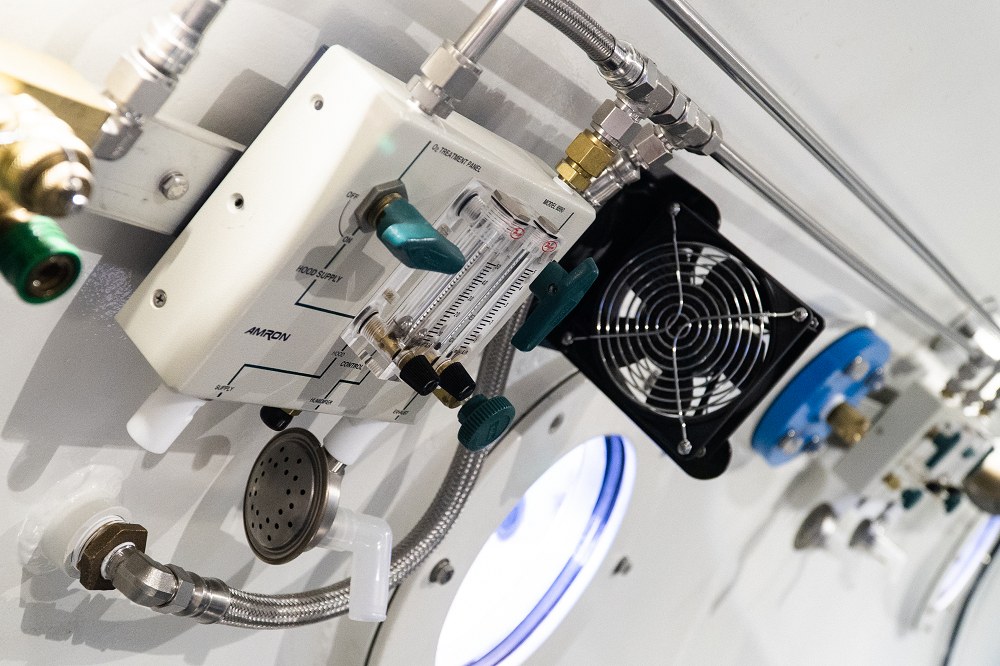The National Brain Injury Rescue and Rehabilitation Project was established as a preliminary study to test the safety and practicality of multi-center hyperbaric oxygen administration for the post-concussive symptoms of chronic mild traumatic brain injury as a precursor to a pivotal, independent, multi-center, controlled clinical trial. This report presents the results for 32 subjects who completed a preliminary trial of hyperbaric oxygen several years before the passage of the 21 st Century Cures Act. This study anticipated the Act and its reassessment of clinical research. Subjects received 40-82 one-hour treatments at 1.5 atmospheres absolute 100% oxygen. Outcome measures included repeated self-assessment measures and automated neurocognitive tests. The subjects demonstrated improvement in 21 of 25 neurocognitive test measures observed. The objective neurocognitive test components showed improvement in 13 of 17 measures. Earlier administration of hyperbaric oxygen post injury, younger age at the time of injury and hyperbaric oxygen administration, military status, and increased number of hyperbaric oxygen administrations were characteristics associated with improved outcomes. There were no adverse events. Hyperbaric oxygen was found to be safe, inexpensive and worthy of clinical application in the 21 st Century model of facile data collection provided by recent research regulatory shifts in medicine. The study was approved by the ethics review committee of the Western Institutional Review Board (WIRB; Protocol #20090761).
Influences of hyperbaric oxygen on blood pressure, heart rate and blood glucose levels in patients with diabetes mellitus and hypertension.
Abstract: We investigated the influences of hyperbaric oxygen (HBO(2)) on systolic blood pressure (SBP), diastolic blood pressure (DBP), heart rate (HR) and blood glucose level (BGL). Forty one patients with hypertension (HTN), diabetes mellitus (DM), HTN and DM...
The role of hyperbaric oxygen therapy in ischaemic diabetic lower extremity ulcers: a double-blind randomised-controlled trial.
Abstract: ischaemic lower-extremity ulcers in the diabetic population are a source of major concern because of the associated high risk of limb-threatening complications. The aim of this study was to evaluate the role of hyperbaric oxygen in the management of these...
Hyperbaric oxygen (HBO) therapy in treatment of diabetic foot ulcers. Long-term follow-up.
The cause of diabetic foot ulcers is multifactorial, e.g., neuropathy and angiopathy, leading to functional disturbances in the macrocirculation and skin microcirculation. Adequate tissue oxygen tension is an essential factor in infection control and wound healing. Hyperbaric oxygen (HBO) therapy, daily sessions of oxygen breathing at 2.5-bar increased pressure in a hyperbaric chamber, has beneficial actions on wound healing including antimicrobial action, prevention of edema and stimulation of fibroblasts. The aim of the present study was to investigate the long-term effect of HBO in treatment of diabetic foot ulcers. Thirty-eight diabetic patients (30 males) with chronic foot ulcers were investigated in a prospective study. The mean age was 60+/-13 years and the mean diabetes duration 27+/-14 years. All patients were evaluated with measurements of transcutaneous oxygen tension (tcPO(2)), peripheral blood pressure, and HbA(1c). All patients had a basal tcPO(2) value lower than 40 mmHg, which increased to >/=100 mmHg, or at least three times the basic value, during inhalation of pure oxygen. Seventeen patients underwent 40-60 sessions of HBO therapy, while 21 patients were treated conventionally. The follow-up time was 3 years. 76% of the patients treated with HBO (Group A) had healed with intact skin at a follow-up time of 3 years. The corresponding value for patients treated conventionally (Group B) was 48%. Seven patients (33%) in Group B compared to two patients (12%) in Group A went to amputation. Peripheral blood pressure, HbA(1c), diabetes duration, and basal values of tcPO(2) were similar in both groups. Adjunctive HBO therapy can be valuable for treating selected cases of hypoxic diabetic foot ulcers. It seems to accelerate the rate of healing, reduce the need for amputation, and increase the number of wounds that are completely healed on long-term follow-up. Additional studies are needed to further define the role of HBO, as part of a multidisciplinary program, to preserve a functional extremity, and reduce the short- and long-term costs of amputation and disability.

